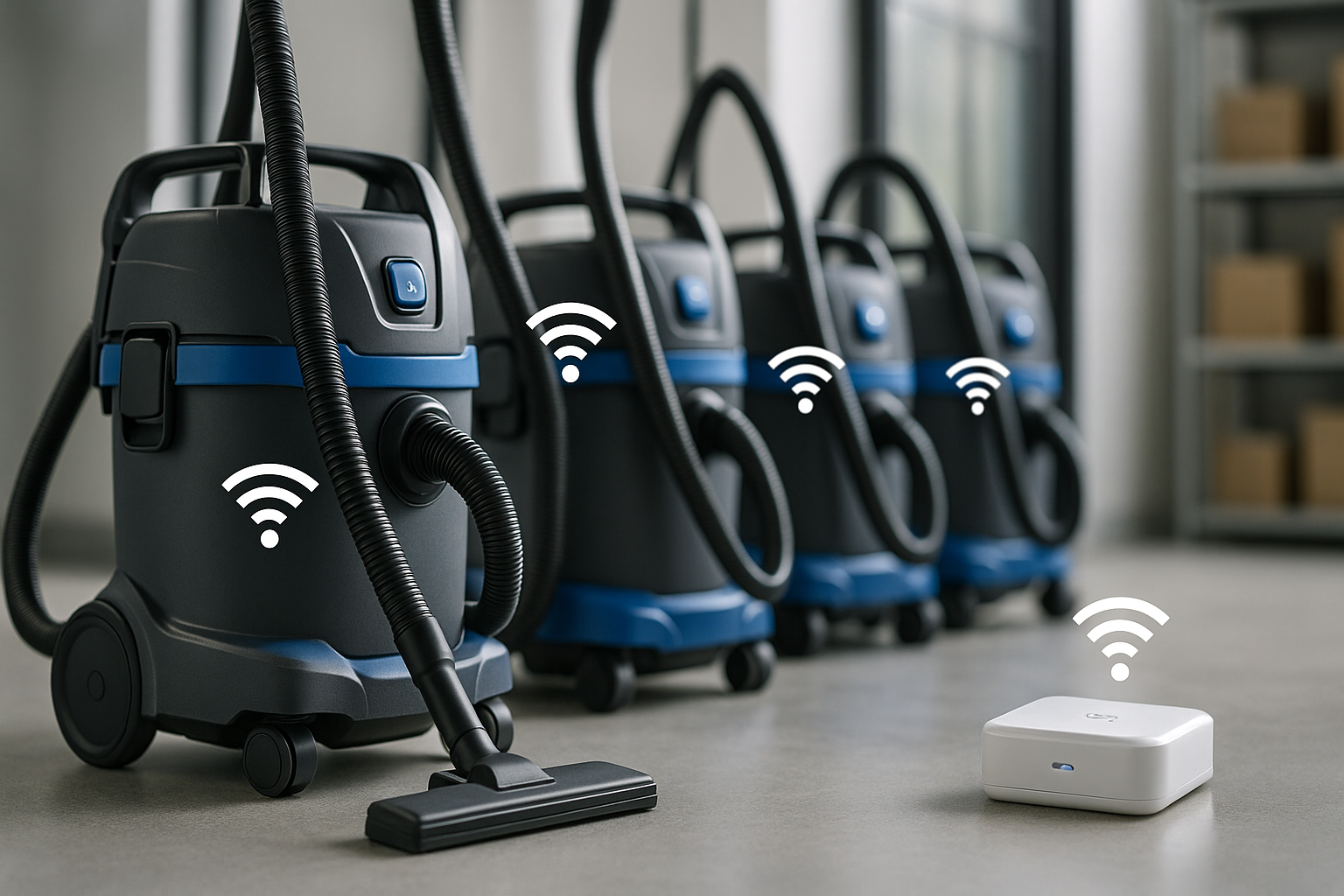Upgrading to connected (IoT) vacuum cleaning fleets is transforming the cleaning industry by empowering facility managers and building service contractors with real-time intelligence and operational control. But when it comes to measuring return on investment (ROI), what really tips the scale?
1. Advanced Visibility and Predictive Maintenance
One of the key ROI drivers is the ability to track the entire vacuum fleet in real time, allowing proactive service scheduling and minimizing unexpected downtime. Facility teams can act on automated alerts and data trends to extend the useful life of every unit. According to the International Facility Management Association (IFMA), companies using connected cleaning technology have reported up to 30% fewer equipment failures—a clear path to reducing maintenance costs and protecting capital investments.
2. Resource Optimization and Labor Efficiency
Connected vacuums automatically collect operational data, helping managers assign staff more efficiently and balance workloads across multiple locations. For example, leading service providers like ISS World have shown that smart deployment strategies can lead to more consistent results, higher customer satisfaction, and improved retention rates. Data-driven scheduling also cuts labor waste, which is a significant factor in the overall ROI equation.
3. Sustainability, Utility Savings, and Reporting
Today’s facilities are under pressure to hit energy targets and document green initiatives. Modern IoT-enabled fleets offer robust energy monitoring, with features that help teams analyze and lower electricity consumption. Reports from the Green Cleaning Network demonstrate that organizations using these systems can save up to 25% in energy costs annually while supporting sustainability goals and compliance reporting.
Crucially, the adoption of smart devices is even more effective when companies choose equipment built for modern demands—such as a solution featuring high suction for deep cleaning, designed to be portable and quiet, offering self-cleaning capabilities and multi-functional performance, with a durable and fast-responding operation, lightweight and energy-saving construction, engineered for maximum efficiency and power, as well as a large-capacity design for wet and dry environments—all combined in one advanced vacuum cleaner.
4. Compliance and Audit Simplification
Automated recordkeeping and digital reporting from connected fleets make compliance simple, helping companies meet industry standards and streamline the audit process. This also builds trust with clients and regulatory authorities.
Conclusion
Ultimately, the ROI of upgrading to connected vacuum cleaning fleets is anchored in smarter asset management, labor efficiency, sustainability, and seamless compliance. Facilities investing in new-generation equipment—like a high suction, portable and quiet, self-cleaning, multi-functional, durable yet fast, lightweight, energy-saving, efficient and powerful, large-capacity wet dry vacuum cleaner—are seeing measurable value and long-term operational gains.
For further information, visit IFMA Knowledge Library, ISS World Cleaning Insights, and Green Cleaning Network Resources.
More solutions: www.lxvacuum.com

















